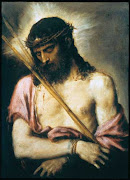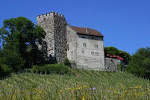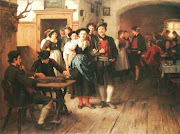
It has been open season on the Servant of God,
Pope Pius XII, ever since the Hochhuth play entitled
The Deputy (
Der Stellvetreter).
However, in recent times it has got much worse since renegade Catholic and purveyor of falsehood, John Cornwall, published his book attacking the late Pope.
On the cover of this book, Cornwell does not hesitate to place a photograph of Pius XII exiting a building being saluted by guards in German coal-scuttle helmets. Impression? - that they are Nazis... except for one hidden fact: the photo was taken in 1929 during the Weimar Republic before the Nazis came to power!
Happily, however, Cornwall's dishonest book has spawned over 25 new books rebutting his falsehoods severally,
seriatim and in detail.
Let us, however, not take our cue from the mendacious Mr Cornwall.
Let us hear what the Jews themselves said of Pope Pius XII.
Dr. Joseph Nathan wrote: "Above all, we acknowledge the Supreme Pontiff and the religious men and women who, executing the directives of the Holy Father, recognized the persecuted of their brothers and, with great abnegation, hastened to help them, disregarding the terrible dangers to which they were exposed".
At Pope Pius XII’s death in 1958,
Golda Meir sent an eloquent message: "We share in the grief of humanity. When fearful martyrdom came to our people in the decade of Nazi terror, the voice of the pope was raised for its victims. The life of our times was enriched by a voice speaking out about great moral truths above the tumult of daily conflict. We mourn a great servant of peace".
 Golda Meir, Israeli Prime Minister praised Pope Pius XII and mourned his death
Golda Meir, Israeli Prime Minister praised Pope Pius XII and mourned his death
During and after the war, many well-known Jews —
Albert Einstein, Moshe Sharett, Rabbi Isaac Herzog, and innumerable others — publicly expressed their gratitude to Pius.
In his 1967 book
The Last Three Popes and the Jews, the Israeli diplomat
Pinchas Lapide (who served as Israeli consul in Milan and interviewed Italian Holocaust survivors) declared Pius XII "was instrumental in saving at least 700,000, but probably as many as 860,000 Jews from certain death at Nazi hands".
In response to the new attacks on Pius XII, several Jewish scholars have spoken out recently.
Sir Martin Gilbert told an interviewer that Pius XII deserves not blame but thanks.
 Sir Martin Gilbert, historian and scholar said Pope Pius XII deserves thanks not blame
Sir Martin Gilbert, historian and scholar said Pope Pius XII deserves thanks not blame
, the leading authority on Roman Jews during the Holocaust, added, "I have a folder on my table in Israel entitled 'Calumnies Against Pius XII.' . . . Without him, many of our own would not be alive".
Richard Breitman (the only historian authorized to study U.S. espionage files from World War II) noted that secret documents prove the extent to which "Hitler distrusted the Holy See because it hid Jews".
Despite allegations to the contrary, the best historical evidence now confirms both that Pius XII was not silent and that almost no one at the time thought him so.
Any fair and thorough reading of the evidence demonstrates that Pius XII was a persistent critic of Nazism.
Of the forty-four speeches Pacelli gave in Germany as papal nuncio between 1917 and 1929, forty denounced some aspect of the emerging Nazi ideology.
In March 1935, he wrote an open letter to the bishop of Cologne calling the Nazis "false prophets with the pride of Lucifer".
That same year, he assailed ideologies "possessed by the superstition of race and blood" to an enormous crowd of pilgrims at Lourdes. At Notre Dame in Paris two years later, he named Germany a "nation whom bad shepherds would lead astray into an ideology of race".
Holocaust survivors such as
Marcus Melchior, the chief rabbi of Denmark, argued that "if the pope had spoken out, Hitler would probably have massacred many more than six million Jews".
 Chief Rabbi Marcus Melchior of Denmark, Holocaust survivor, said that if Pope Pius XII had spoken out more Jews would have perished
Chief Rabbi Marcus Melchior of Denmark, Holocaust survivor, said that if Pope Pius XII had spoken out more Jews would have perished
called upon his experience at the Nuremberg trials to say (in a letter to the editor after
Commentary published an excerpt from Guenter Lewy in 1964): "Every propaganda move of the Catholic Church against Hitler's Reich would have been not only 'provoking suicide,' . . . but would have hastened the execution of still more Jews and priests".
The Dutch bishops' pastoral letter condemning "the unmerciful and unjust treatment meted out to Jews" was read in Holland's Catholic churches in July 1942. The well-intentioned letter — which declared that it was inspired by Pius XII — backfired.
Lapide wrote: "The saddest and most thought-provoking conclusion is that whilst the Catholic clergy in Holland protested more loudly, expressly, and frequently against Jewish persecutions than the religious hierarchy of any other Nazi-occupied country, more Jews — some 110,000 or 79 percent of the total — were deported from Holland to death camps".
Bishop Jean Bernard of Luxembourg, an inmate of Dachau from 1941 to 1942, notified the Vatican that "whenever protests were made, treatment of prisoners worsened immediately".
Late in 1942,
Archbishop Sapieha of Cracow and two other Polish bishops, having experienced the Nazis' savage reprisals, begged Pius XII not to publish his letters about conditions in Poland.
 Albert Einstein paid tribute to Pope Pius XII for saving so many Jewish lives
Albert Einstein paid tribute to Pope Pius XII for saving so many Jewish lives
As early as December 1940, in an article in Time magazine,
Albert Einstein paid tribute to Pius XII: "Only the Church stood squarely across the path of Hitler's campaign for suppressing the truth. I never had any special interest in the Church before, but now I feel a great affection and admiration because the Church alone has had the courage and persistence to stand for intellectual truth and moral freedom. I am forced thus to confess that what I once despised, I now praise unreservedly".
In 1943,
Chaim Weizmann, who would become Israel's first president, wrote that "the Holy See is lending its powerful help wherever it can, to mitigate the fate of my persecuted co-religionists".
 Chaim Weizmann, first President of Israel wrote that the Holy See was helping to rescue Jews
Chaim Weizmann, first President of Israel wrote that the Holy See was helping to rescue Jews
, Israel's second prime minister, met with Pius XII in the closing days of the war and "told him that my first duty was to thank him, and through him the Catholic Church, on behalf of the Jewish public for all they had done in the various countries to rescue Jews".
 Moshe Sharett, Israel's second Prime Minister, said it was his "first duty" to thank Pope Pius XII
Moshe Sharett, Israel's second Prime Minister, said it was his "first duty" to thank Pope Pius XIIRabbi
Isaac Herzog, Chief Rabbi of Israel, sent a message in February 1944 declaring "The people of Israel will never forget what His Holiness and his illustrious delegates, inspired by the eternal principles of religion, which form the very foundation of true civilization, are doing for our unfortunate brothers and sisters in the most tragic hour of our history, which is living proof of Divine Providence in this world".
 Chief Rabbi Isaac Herzog of Ireland and then, later, of Israel, wrote that the people of Israel will never forget what Pope Pius XII was doing to help Jews
Chief Rabbi Isaac Herzog of Ireland and then, later, of Israel, wrote that the people of Israel will never forget what Pope Pius XII was doing to help Jews
In September 1945,
Leon Kubowitzky, secretary general of the World Jewish Congress, personally thanked the pope for his interventions, and the World Jewish Congress donated $20,000 to Vatican charities "in recognition of the work of the Holy See in rescuing Jews from Fascist and Nazi persecutions".
In 1955, when Italy celebrated the tenth anniversary of its liberation, the
Union of Italian Jewish Communities proclaimed 17 April a "Day of Gratitude" for the pope's wartime assistance.
On 26 May 1955, the
Israeli Philharmonic Orchestra flew to Rome to give a special performance in the Vatican of Beethoven's Seventh Symphony — an expression of the State of Israel's enduring gratitude to the pope for help given the Jewish people during the Holocaust.
Pius XII was one of the few world leaders outside Jewry itself who was quick to recognize the danger of Nazism. Lapide’s book
The Last Three Popes and the Jews demonstrates convincingly the consistent and active protection provided to Jews in Europe by the papacy.
Rev Jean Charles-Roux, now a Rosininian priest living in Rome and whose father was French Ambassador to the Holy See in the 30’s, lived with his family in Rome during the fateful pre-war period. He recalls that the Pope told his father as early as 1935 that the new regime in Germany was "diabolical".
The Ambassador frequently warned his government but the general reaction in France was chiefly that it was good to see the back of the Prussian militarist and that it was no bad thing that an Austrian-Czech house painter was now Chancellor.
The reaction in the USA and Britain was scarcely different at that time; and even later when they must have begun to know about the camps. The U.S. government accepted a total of 10,000 – 15,000 Jewish refugees throughout the war. — a scandalously small number.
Britain was little better and before the war the government had been full of "appeasers", the Duke of Windsor visited Hitler and Lloyd George, astonishingly, even went so far as to call him "the greatest living German".
 Former British Prime Minister, David Lloyd-George, then Lord Lloyd-George, with Hitler, called the Nazi leader "the greatest living German". So much for the supposedly great Welsh "Liberal" leader - but no-one has yet spoken of "Hitler's Welsh Liberal".
Former British Prime Minister, David Lloyd-George, then Lord Lloyd-George, with Hitler, called the Nazi leader "the greatest living German". So much for the supposedly great Welsh "Liberal" leader - but no-one has yet spoken of "Hitler's Welsh Liberal".
In August 1943 Pius XII received a plea from the
World Jewish Congress to try to persuade the Italian authorities to remove 20,000 Jewish refugees from internment camps in Northern Italy.
"Our terror-stricken brethren look to Your Holiness as the only hope for saving them from persecution and death" they wrote.
In September 1943,
A L Easterman on behalf of the WJC reported to the Apostolic Delegate in London (there was no Nuncio since the British government always refused to recognize the diplomatic rights of the Holy See—a hangover from our anti-Catholic past). He reported that the efforts of the Holy See on behalf of the Jews had been successful and wrote, "I feel sure that the efforts of your Grace, and of the Holy See have brought about this fortunate result, and I should like to express to the Holy See and yourself the warmest thanks of the World Jewish Congress".
In November, 1943 Chief Rabbi Isaac Herzog wrote to Cardinal Roncalli, the future Pope John XXIII, then Apostolic Delegate for Turkey and Greece, saying: "I take this opportunity to express to your Eminence my sincere thanks as well as my deep appreciation of your very kindly attitude to Israel and of the invaluable help given by the Catholic Church to the Jewish people in its affliction. Would you please convey these sentiments which come from Sion, to His Holiness the Pope [Pius XII] along with the assurances that the people of Israel know how to value his assistance and his attitude".
The
American Jewish Welfare Board wrote to Pius XII in July 1944 to express its appreciation for the protection given to the Jews during the German occupation of Italy.
At the end of the war, the
World Jewish Congress expressed its gratitude to the Pope and gave 20 million Lire to Vatican charities.
Another Israeli diplomat in Italy claimed that: "The Catholic Church saved more Jewish lives during the war than all the other Churches, religious institutions and rescue organizations put together. Its record stands in startling contrast to the achievements of the International Red Cross and the Western Democracies".
 Chief Rabbi of Rome, Israel Zolli, converted to Roman Catholicism and took the baptismal name of "Eugenio", the Christian name of Pope Pius XII, in admiration of his help for the Jews.
Chief Rabbi of Rome, Israel Zolli, converted to Roman Catholicism and took the baptismal name of "Eugenio", the Christian name of Pope Pius XII, in admiration of his help for the Jews.
As a matter of simple historical fact,
Rabbi Israel Zolli, the Chief Rabbi of Rome, was received into the Catholic Church in 1945 after the war was over. He was baptized entirely of his own free will and asked Pius XII, with whom he had worked closely in the saving of Jewish lives, to be his godfather. Dr. Zolli chose the name Eugenio as his baptismal name precisely because it was Pius XII’s own Christian name.
These facts are rarely mentioned by commentators, yet they are clearly vital to any assessment of the reputation of Pius XII.
Instead a mendacious campaign has been maintained against the good name of that pope, largely centring around the accusation that he kept silent during the war about the plight of the Jews and refused to mention them by name. It is now implied by some that this was so because he was racist and an anti-Semite.
Those who make such claims often have a dark past of their own to conceal. One such was Rolf Hochhuth, the first to begin the hate campaign. What few know is that Hochhuth was, himself, a former member of the Hitler Youth.
 Rolf Hochhuth, former Hitler Youth member, who worked out his guilt by defaming Pope Pius XII
Rolf Hochhuth, former Hitler Youth member, who worked out his guilt by defaming Pope Pius XII
, a Roman Catholic, is regarded as a "righteous gentile" by many Jews for saving the lives of some 1,200 Jews in his factories. Why then is Pope Pius XII so unjustly criticized, despite saving over 800,000 Jewish lives?
 Pope Pius XII saved some 800,000 Jewish lives during the Holocaust, more than all the other agencies and individuals put together - yet some dishonestly call him "Hitler's Pope". It is a low calumny against a great man.
Pope Pius XII saved some 800,000 Jewish lives during the Holocaust, more than all the other agencies and individuals put together - yet some dishonestly call him "Hitler's Pope". It is a low calumny against a great man.
Eugenio Pacelli, the Servant of God, Pope Pius XII, RIP
...








.jpg)

















_-002.jpg/220px-Circle_of_Anton_Raphael_Mengs,_Henry_Benedict_Maria_Clement_Stuart,_Cardinal_York_(ca_1750)_-002.jpg)

